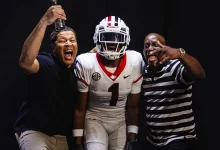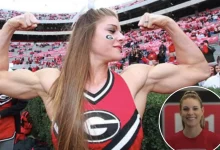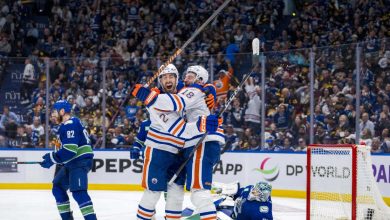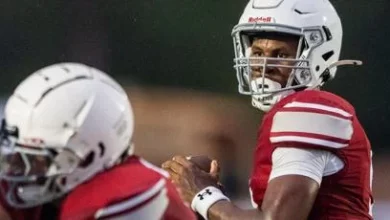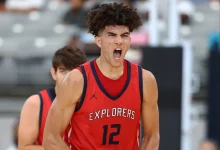Lakers planning to part ways with LeBron James by spring 2026, signaling the end of his era in Los Angeles, with Luka Doncic as the potential new face of the franchise.
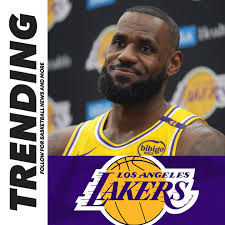
The Los Angeles Lakers, one of the most storied franchises in NBA history, are approaching a pivotal crossroads. LeBron James, the 21-time All-Star, will soon reach the twilight of his legendary career, and recent developments suggest that the franchise is preparing to move on from its iconic face by the spring of 2026. This planned transition signifies more than just a roster change; it encapsulates the evolving nature of NBA team-building, star longevity, and franchise legacy management. With Luka Doncic emerging as a superstar and potential franchise centerpiece, the Lakers are poised to redefine their identity in the post-LeBron era. This analysis delves into the reasons behind this strategic shift, the implications for the franchise and the NBA landscape, and what the future holds for Lakers fans and basketball enthusiasts worldwide.
LeBron James: The Player and the Franchise Icon
LeBron’s Impact on the Lakers
LeBron James arrived in Los Angeles in 2018, bringing with him not just his exceptional basketball talent but also a global brand, championship aspirations, and a leadership presence that reshaped the Lakers’ culture. His arrival was seen as a catalyst for the franchise’s return to championship contention, culminating in the Lakers winning the 2020 NBA Championship amid the COVID-19 pandemic. Over his five seasons with the Lakers, LeBron contributed significantly both on and off the court, elevating the franchise’s profile and attracting global attention.
The Aging Superstar
However, LeBron’s age and physical toll are undeniable factors. Born in 1984, he will turn 40 in 2024 and approaching 41 by 2025-26. While the player has defied expectations with his longevity, injuries and decreasing athleticism are inevitable over time. The Lakers’ decision to not offer him a contract beyond the 2025-26 season signals a strategic acknowledgment of this reality, signaling an end to his Lakers tenure on their terms.
LeBron’s Legacy and the “Hollywood Ending”
LeBron’s career is already cemented as one of the greatest in NBA history. Yet, like many legends, he has expressed a desire for a fitting farewell—a “Hollywood ending”—that aligns with his stature as a franchise icon and global ambassador for the game. The Lakers’ plan for his departure by spring 2026 aligns with his own timeline, providing an opportunity for a graceful exit that honors his contributions.
The Strategic Shift: Why the Lakers Are Planning to Move On
Franchise Rebuilding and Cap Management
The Lakers’ decision to let go of LeBron after the 2025-26 season is driven by multiple strategic considerations:
Salary Cap and Financial Flexibility: LeBron’s current contract takes up significant cap space. Moving on allows the Lakers to rebuild around younger stars or high-potential players, creating space for future signings and roster flexibility.
Roster Planning: Transitioning away from aging veterans like LeBron enables the team to focus on developing younger talent, building a sustainable core, and pursuing high draft picks or strategic trades.
Window for Competitive Rebuilding: The Lakers have a limited window with LeBron at his peak. Once he departs, they can fully commit to a rebuild, possibly leveraging their assets for a high draft pick or acquiring a rising star.
The Lakers’ Recent Performance and Future Outlook
While the Lakers secured an NBA championship in 2020, subsequent seasons have been marred by injuries, roster instability, and inconsistent performance. The franchise recognizes that maximizing their championship potential in the short term may no longer be feasible with aging stars and the current roster composition. Planning a transition aligns with a long-term vision of building a new era of competitiveness.
Fan Expectations and Franchise Legacy
Lakers fans hold LeBron in the highest regard, and his departure will be emotionally significant. The franchise’s management must balance honoring his legacy while charting a new course. The plan to transition in 2026 provides clarity and a narrative that can help manage expectations and maintain fan engagement.
Luka Doncic: The Future Face of the Franchise
Rise of Luka Doncic
Luka Doncic, born in 1999 in Slovenia, has rapidly established himself as one of the league’s brightest stars. Since entering the NBA in 2018, Doncic has been known for his exceptional skill set, basketball IQ, rebounding, scoring ability, and leadership qualities. His performances with the Dallas Mavericks have garnered widespread acclaim, and many analysts see him as a potential franchise player capable of elevating a team to championship contention.
Why Doncic Fits the Lakers’ Vision
Star Power and Marketability: As a globally recognized player, Doncic’s profile aligns well with the Lakers’ brand as a premier basketball destination.
Skill Set and Versatility: His ability to play multiple positions, facilitate the offense, and lead a team makes him an ideal candidate to carry the franchise forward.
Potential for Growth: At just over 24 years old in 2023, Doncic is entering his prime years, with room to develop further into an even more complete player.
Acquiring Doncic: Possibilities and Challenges
The Lakers’ pursuit of Doncic would be complex, involving high-profile trades, financial negotiations, and roster restructuring. Dallas Mavericks’ ownership and management would likely seek significant assets in exchange for their franchise cornerstone. This could include multiple young players, draft picks, or established veterans, which the Lakers may be willing to sacrifice in their pursuit of a new identity.
Luka Doncic’s Fit in Los Angeles
The Lakers’ roster and playing style could adapt to Luka’s strengths, emphasizing ball movement, spacing, and high-paced offense. His leadership qualities could also help the team foster a culture of winning, especially as they transition away from veteran stars like LeBron.
The Broader Context: NBA Franchise Transitions and Aging Stars
Historical Precedents
NBA history is replete with franchise transitions involving aging stars. Examples include:
Kobe Bryant’s Retirement and Post-Prime Years: The Los Angeles Lakers transitioned from Kobe’s era to a rebuilding phase with young talents.
Kevin Garnett and Paul Pierce’s Departure from the Celtics: Signaled a shift from a championship core to a rebuild.
Dirk Nowitzki’s Retirement and the Mavericks’ Rebuild: Transitioned from a superstar to a franchise legend with a new core.
Aging Stars and Transition Timelines
Teams often plan for a gradual transition, giving aging stars moments of farewell while preparing for the future. The NBA’s salary cap system and draft process facilitate this cycle of renewal, emphasizing the importance of acquiring young talent and developing internal prospects.
Franchise Rebuilds and Strategic Patience
Rebuilding is a complex process requiring strategic patience. Teams often face tough decisions—trading veteran stars, sacrificing short-term success for long-term potential, and managing fan expectations. The Lakers’ projected plan to move on from LeBron by 2026 reflects a calculated approach to this cycle.
The Impact on Lakers’ Future and the NBA Landscape
Potential Rebuild Pathways
Trade Strategies: The Lakers could leverage their cap space, draft picks, and young players to acquire Luka Doncic or other rising stars.
Draft and Development: Investing in young prospects and developing them into core players.
Free Agency Signings: Targeting key free agents to complement their emerging roster.
Implications for the NBA
Shift in Power Dynamics: The Lakers’ transition could alter competitive balance, opening opportunities for other franchises.
Star Movement and Superteam Formation: The NBA continues to see stars moving to maximize their legacy and opportunities, with superstar trades becoming more common.
Global Fan Engagement: The movement of stars like Luka Doncic to iconic franchises sustains global interest and viewership.
The Emotional and Cultural Significance
LeBron’s Legacy and Lakers’ Heritage
LeBron James has been more than just a player; he’s been a cultural icon, a symbol of excellence, and a leader on and off the court. His departure will mark the end of an era, evoking nostalgia and reflection among fans and players alike.
Luka’s Ascendancy and New Identity
Luka Doncic embodies a new generation of talent—skilled, charismatic, and poised to become a league-wide leader. His rise signifies a shift in the NBA’s narrative, from established legends to emerging superstars.
Fan Perspectives
While some fans may mourn the end of LeBron’s Lakers chapter, others are eager to witness the new era’s unfolding. The franchise’s ability to balance honoring its history while embracing future stars will be critical to maintaining its legendary status.
A Transition Paved in Strategy, Legacy, and Future Promise
The Los Angeles Lakers’ potential move to part ways with LeBron James by spring 2026 is a strategic, emotionally charged decision rooted in the realities of aging, franchise sustainability, and long-term planning. This transition signifies a natural cycle in the NBA—honoring the legends of yesterday while nurturing the stars of tomorrow. Luka Doncic’s emergence as a potential franchise centerpiece aligns with the Lakers’ vision of remaining competitive and relevant in a rapidly evolving league. As the franchise prepares for this new chapter, it must navigate the delicate balance of honoring its storied past, managing its future roster construction, and engaging a passionate fan base eager to see the Lakers ascend to new heights. Ultimately, this transition encapsulates the essence of professional sports—a continuous pursuit of excellence, adaptation, and legacy building.

